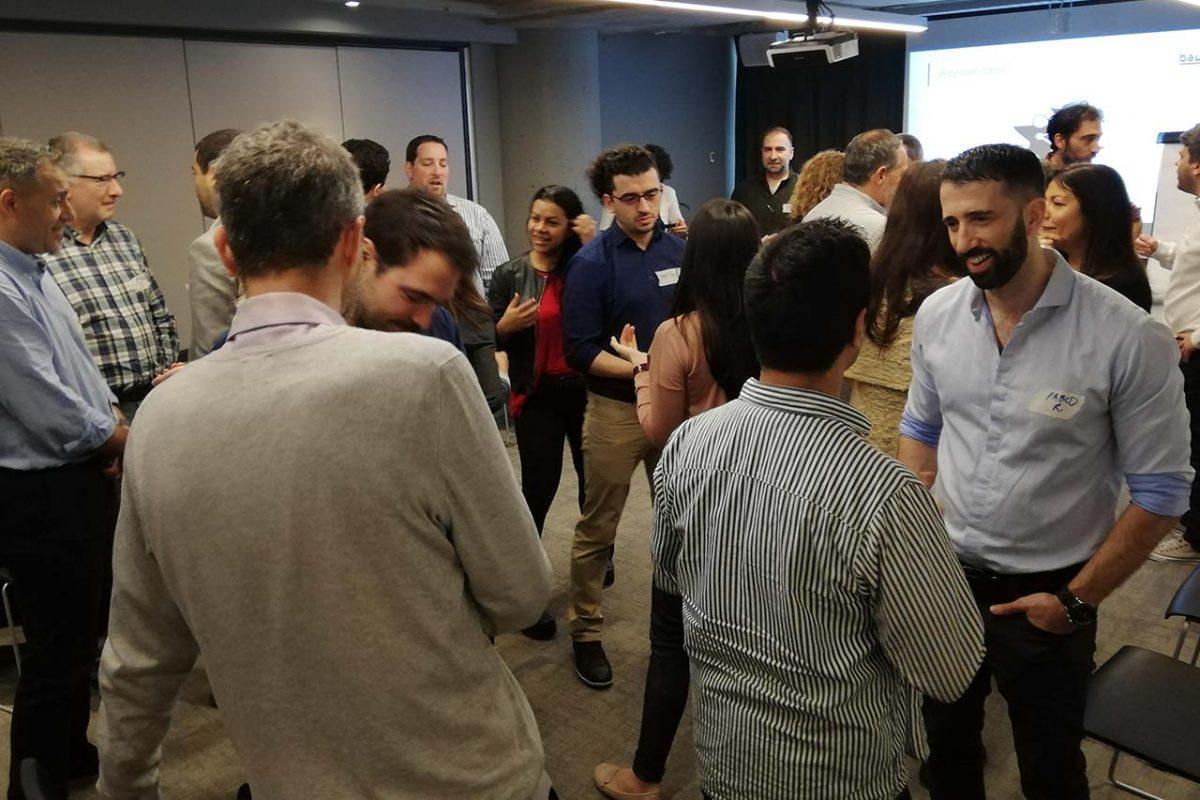There is a highly practical and accessible resource to help resolve this: Liberating Structures, a method to enhance business creativity and team innovation.
Specifically, Liberating Structures are 33 microstructures that help teams work and a better interaction between them. This is a proven method used to unleash the intelligence of each member in a team in order to obtain better and more creative ideas. These are patterns that encourage, enrich and deepen the ways in which people interact in teamwork, in order to facilitate the deployment of individual and group innovation, stimulating the participation of all members of the organization.
Liberating Structures
These microstructures are adaptable on diverse situations and are ideal as a complement for teamwork practices commonly used in companies, such as discussions, report presentations and brainstorming, among others.
In times where collaborative work is leitmotiv, Liberating Structures are necessary tools since they have the ability to modify the way in which people collaborate and discover solutions together.
The microstructures are especially useful as support for Scrum Masters work – the facilitators responsible for ensuring that the values and good practices are established within a Scrum framework. This process puts in practice several proposals so that collaborative teamwork can obtain the best results for a complex project and enable Scrum Masters to perform according the preferred positions, allowing the deployment of a leadership model based on the service and encourage the group to find their own solutions. In addition, Liberating Structures offer limits for groups self-organization and help teams define a goal and a joint strategy to work with the Scrum model without going astray.
These microstructures have the advantage of being simple and easy to learn and understand, and also “open source”, allowing being available to everyone (you can easily get them on the web www.liberatingstructures.com).
Teamwork dynamics
Every single one of the Liberating Structures proposes teamwork dynamics with clear patterns of distribution of space, people and accurate times for each action. But in order to fully understand the power of these microstructures, it is best to review some concrete examples. The “1-2-4-All” microstructure, for instance, is designed to involve members of a team in the generation of questions, ideas and suggestions, simultaneously. You only need 12 minutes for making it work and can be used for thinking in group about some issue that happened at the company, for planning on how to persue, present innovative solutions or simply to share ideas. In the context of this microstructure, we start by introducing a challenge or situation that involves the team, and each member is invited to think about this for 1 minute and contribute ideas. These are then shared in pairs for 2 minutes, and new ideas are created from that interaction; each couple will then share their ideas with another duo for about 4 more minutes, attending to the similarities and differences and developing the same. Finally, each group of 4 people have 5 minutes to share their idea.
As you can see, the “1-2-4-All” microstructure allows to examine proposals that are suggested by a team in no time at all.
Other interesting microstructures are “Troika consulting” (used for obtaining creative solutions from colleagues, with focus on personal challenges), “Crowdsourcing” (taking advantage of learning from large teams and proposing creative ideas in a faster way), and “Impromptu networking” (to quickly share challenges and expectations of a large group and create new connections). There are also liberating structures known as “Conversation coffee” (it is used to raise awareness among the whole team about the meaning of certain deep challenges and generate the conditions for new strategies to emerge) and “Open space” (to build the agenda of priorities among all).
Business creativity
If in your company is not effective with team communication, the way that decisions are made, or the generations of ideas in group – either because it does not encourage everyone’s participation, or because it is too chaotic, Liberating Structures can open the doors to an interesting evolution. By linking several of these microstructures together, a highly productive flow of interactions can be generated and sustained, which enhances the daily dynamics of teamwork and elevates the organization to a whole new level.


